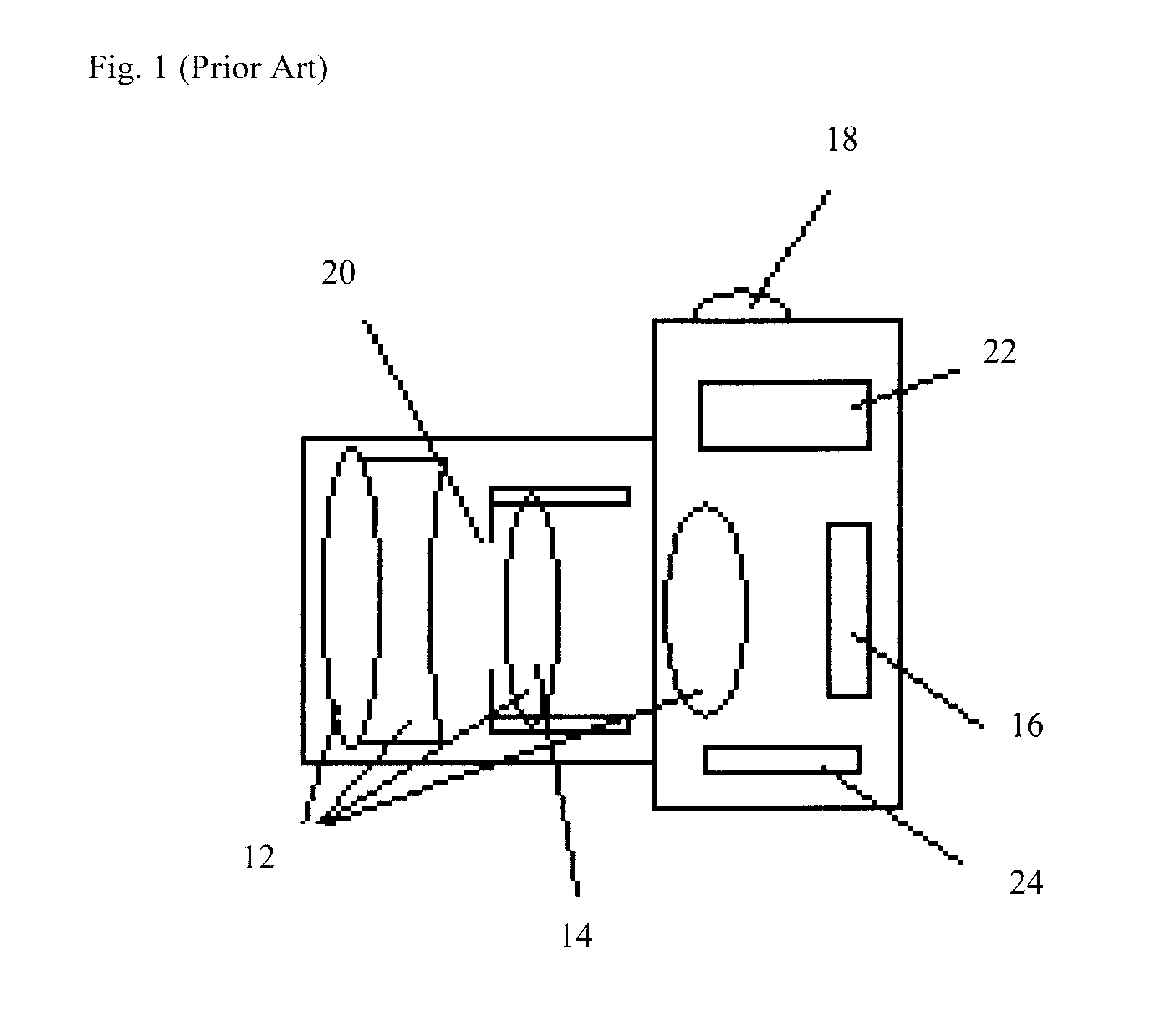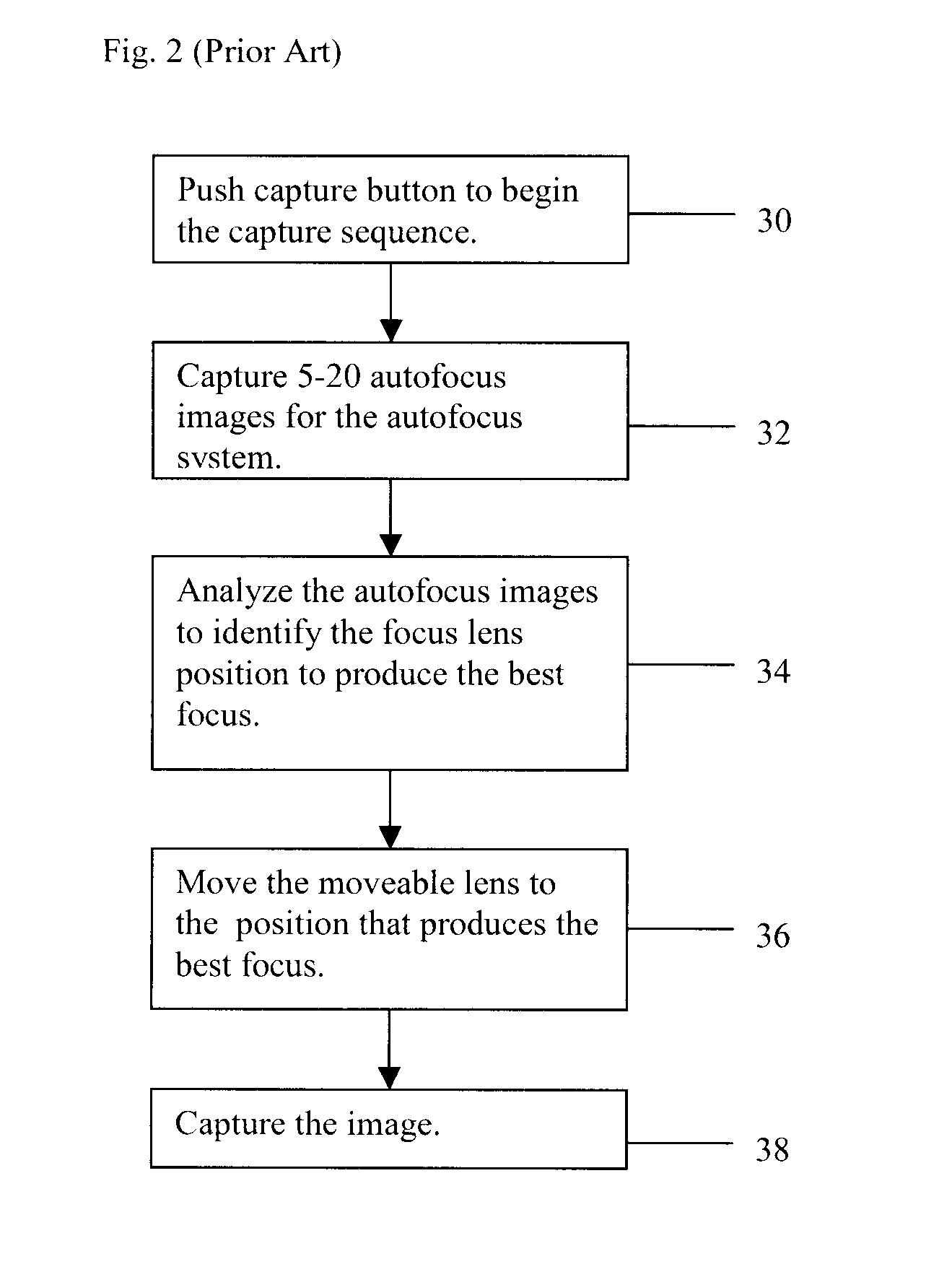Autofocusing still and video images
a technology of autofocus and still images, applied in the direction of exposure control, camera focusing arrangement, printers, etc., can solve the problems of affecting the focus quality of all video images, the calibration between the dual lens rangefinder module and the moveable lens position is not stable within the normal operating environment of digital cameras, and the measured position of the moveable lens in the moveable lens control system is prone to environmental induced changes, so as to improve the resolution and image quality of video images captured by digital capture devices
- Summary
- Abstract
- Description
- Claims
- Application Information
AI Technical Summary
Benefits of technology
Problems solved by technology
Method used
Image
Examples
example 1
[0061]A preferred embodiment is described as an example. In this case, a high speed liquid crystal element is used as is available from LC-Tec Display (LC-TEC DISPLAYS AB, Tunavagen 281, SE-781 73 Borlänge, SWEDEN) such as model FOS-PSCT. By applying a voltage of approximately 100 volts, the element changes from white to transparent. The element is arranged in two independently controllable sections to block half of the aperture at a time (half white and half transparent) with the ability to also operate in a substantially unrestricted mode (substantially transparent in both sections) or a completely white mode (white in both sections). In addition, an imager with at least a portion of the pixels being unfiltered or panchromatic are present wherein the unfiltered or panchromatic pixels are used to capture monochrome autofocus images from wavelengths that span substantially the entire visible range of light.
[0062]The advantages of the liquid crystal element are that it is capable of ...
example 2
[0067]In a further preferred embodiment as an example, that is particularly suitable for still capture, a split aperture device is used. In this embodiment, the moveable lens is positioned at an extreme position, either at near focus or far focus positions, prior to the capture of the autofocus images, the image will be substantially out of focus and a large difference between the two autofocus images is assured. The advantage of this embodiment is that a large signal is provided for analysis to determine the moveable lens position required for best focus quality. The timing for the capture of the autofocus images and the still image would then be similar to that shown in Tables 2 and 3.
example 3
[0068]In another preferred embodiment as an example, in situations where the scene content is rapidly changing, the change of focus, frame to frame, may be faster than desired. In this case, a limit can be applied to the rate of change of the focus between frames. Each frame would still be focused individually but the change of focus between frames would not be allowed to exceed the limit. By limiting the focus change between frames, the focus changes would appear smoother in the video segment.
PUM
 Login to View More
Login to View More Abstract
Description
Claims
Application Information
 Login to View More
Login to View More - R&D
- Intellectual Property
- Life Sciences
- Materials
- Tech Scout
- Unparalleled Data Quality
- Higher Quality Content
- 60% Fewer Hallucinations
Browse by: Latest US Patents, China's latest patents, Technical Efficacy Thesaurus, Application Domain, Technology Topic, Popular Technical Reports.
© 2025 PatSnap. All rights reserved.Legal|Privacy policy|Modern Slavery Act Transparency Statement|Sitemap|About US| Contact US: help@patsnap.com



